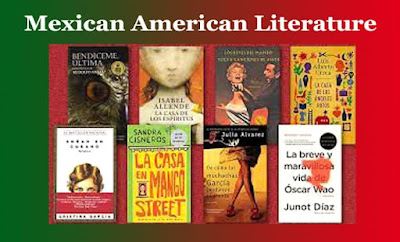Modern American Poetry - Chief Characteristics
Modern American Poetry - Chief Characteristics
Modern American Poetry - Chief Characteristics
Introduction to Modern American Poetry
Modern American poetry refers to the diverse body of poetic work produced by American poets from the early 20th century to the present day. This period has witnessed a wide range of poetic styles, voices, and themes, reflecting the cultural, social, and political changes of the times. Here are some key aspects and characteristics of modern American poetry.
Modern American Poetry - Characteristics
Free Verse and Experimental Forms:
Modern American poets often embraced free verse, breaking away from traditional rhyme and meter. Experimentation with form and structure became a hallmark of this era, with poets exploring new ways to express their ideas.
Example:* Walt Whitman's "Song of Myself" is a pioneering work in free verse, celebrating the individual and reflecting the spirit of democracy.
Imagism and Objectivism:
Movements like Imagism and Objectivism emerged, emphasizing clarity, precision, and the use of vivid images. Poets aimed to convey complex ideas through concrete and evocative language.
Example:* Ezra Pound's "In a Station of the Metro" is a concise Imagist poem that captures a moment in a Parisian subway station with vivid imagery.
Voices of Identity and Diversity:
Modern American poetry has embraced diverse voices, exploring themes related to identity, race, gender, and cultural heritage. Poets have sought to amplify marginalized perspectives and challenge societal norms.
Example: Langston Hughes' "The Negro Speaks of Rivers" is a powerful poem that celebrates the rich history and cultural heritage of African Americans.
Social and Political Commentary:
Many modern American poets used their work as a platform for social and political commentary. Poems became a means of engaging with and responding to the pressing issues of their time.
Example: Allen Ginsberg's "Howl" is a landmark poem that critiques the conformity and materialism of post-World War II America, addressing themes of alienation and social upheaval.
Confessional Poetry:
In the mid-20th century, confessional poetry gained prominence, with poets sharing intimate and personal experiences. These poets often blurred the lines between the self and the speaker in their work.
Example: Sylvia Plath's "Lady Lazarus" is a confessional poem that explores themes of death, rebirth, and the complexities of the poet's identity.
Postmodern and Contemporary Trends:
In more recent decades, American poetry has continued to evolve with postmodern and contemporary trends. Poets engage with fragmented narratives, intertextuality, and diverse stylistic approaches.
Example: Jorie Graham's "The Dream of the Unified Field" is a postmodern poem that weaves together personal and historical elements, exploring the complexities of perception and language.
Performance and Spoken Word:
The spoken word and performance poetry movements have become influential in modern American poetry. Poets often perform their work, bringing a dynamic and oral dimension to the written word.
Example: Amanda Gorman's "The Hill We Climb," delivered at the 2021 presidential inauguration, is a recent example of a powerful spoken word poem addressing hope and resilience.
Conclusion:
Modern American poetry is characterized by its diversity, experimentation, and engagement with the cultural and social landscape. Poets continue to push boundaries, offering fresh perspectives on the human experience and the world around us. 0 0 0. Modern American Poetry - Chief Characteristics
You May Like:










Comments
Post a Comment